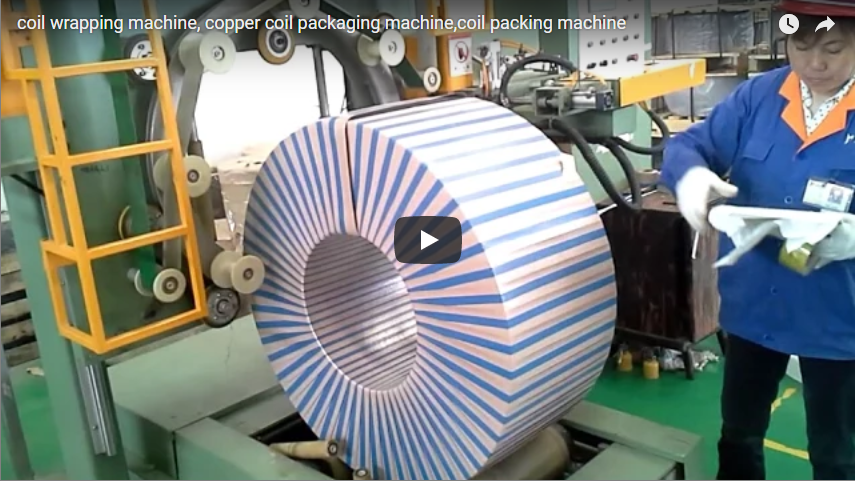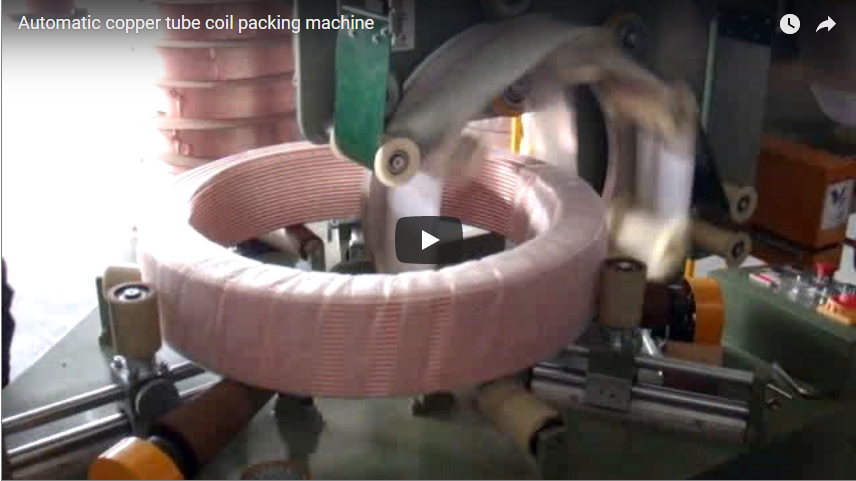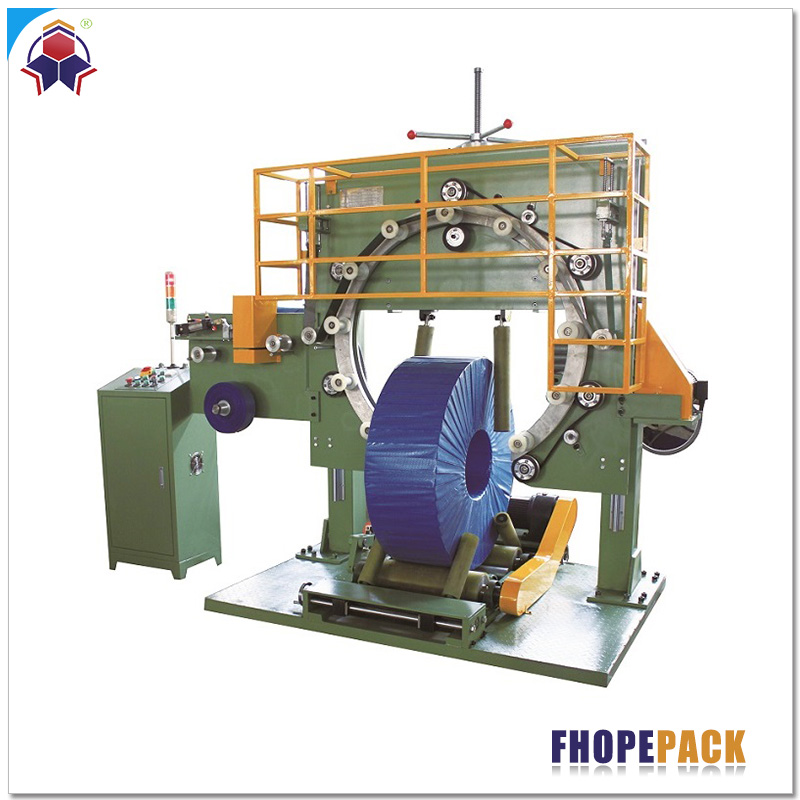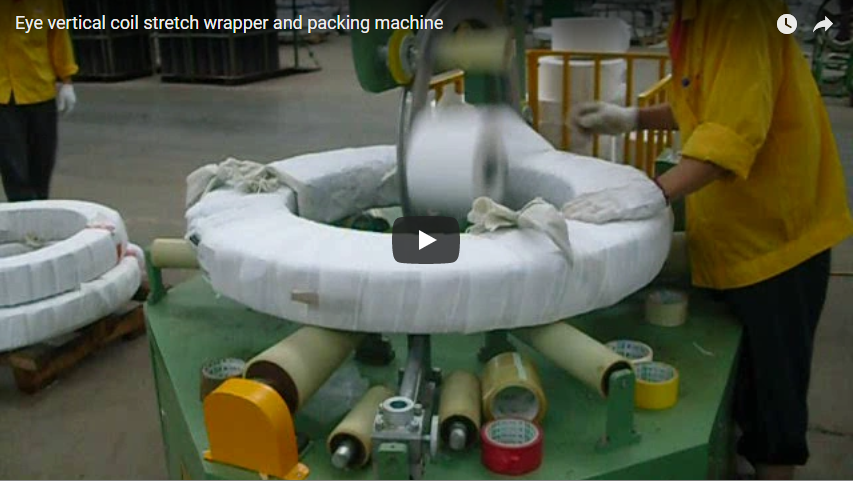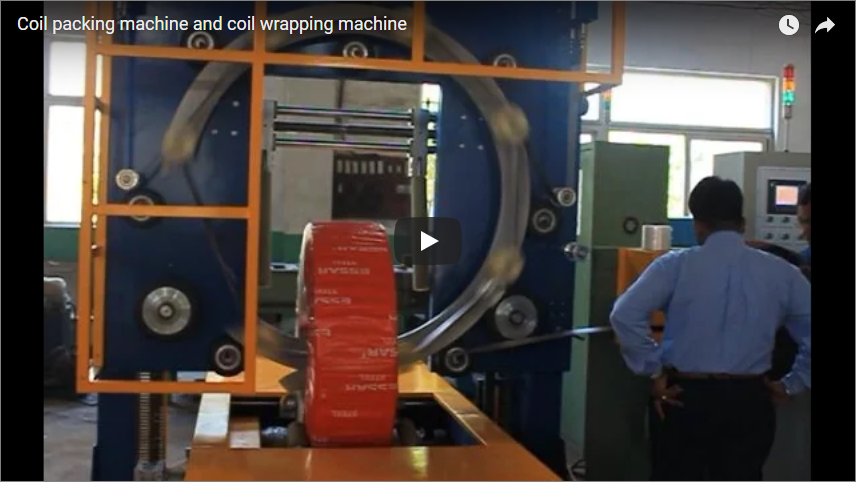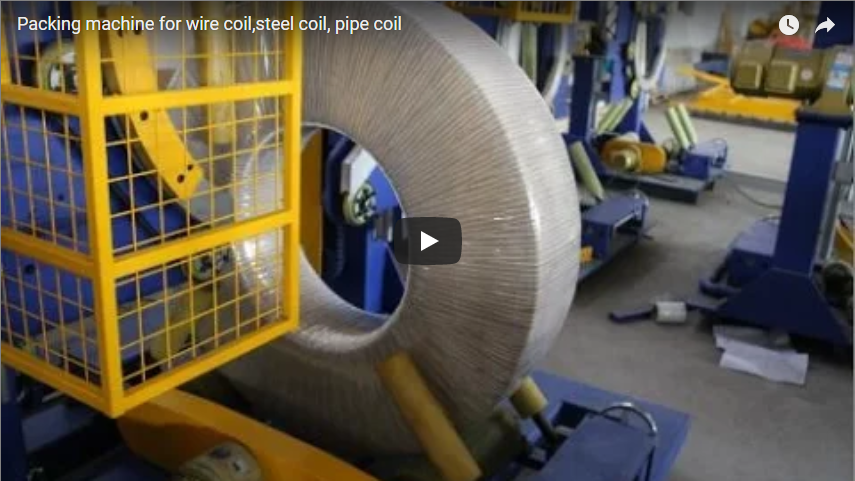Optimizing Coil Protection: Advanced Packing Machine for Copper and Alloy Steel Strips
1. The Critical Need for Superior Coil Protection
Copper and alloy steel strips are fundamental materials in numerous high-value industries, from electronics and power transmission to automotive and precision engineering. However, their susceptibility to environmental factors like moisture, oxygen, dust, and physical damage during handling, storage, and transportation presents significant challenges. Improper packaging can lead to corrosion, surface defects, and ultimately, costly material waste or product failure. Ensuring the integrity of these sensitive coils demands robust and adaptable packaging solutions. This is where specialized coil packing machines become indispensable assets in the production and supply chain.
2. Introducing the Dual-Material Coil Packing Solution
The coil packing machine showcased here is specifically engineered to address the protective needs of both copper and alloy steel strip coils. Its core strength lies in its integrated dual-dispensing system, capable of applying both protective paper (often kraft or VCI paper) and durable plastic film (like stretch film or VCI film) within a single automated wrapping cycle. This provides a tailored approach to packaging based on the specific requirements of the coil material and its end-use application.
The process typically involves the coil being securely positioned on the machine's rollers or shuttle. The machine then initiates the wrapping sequence, precisely feeding, stretching (if applicable), and applying the selected packing material(s) around the coil's outer diameter or through its eye, ensuring comprehensive coverage and protection.
(Placeholder: An image here showing the machine wrapping a copper coil with clear annotation of the paper and film dispensers would enhance understanding. Alt Text: Dual-material coil packing machine applying paper and stretch film to a copper coil.)
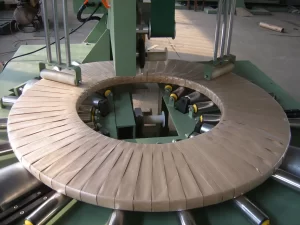
3. Key Technical Specifications and Performance Parameters
To meet diverse industrial demands, these machines offer a range of technical capabilities. While specific configurations vary, typical parameters often include:
- Coil Outer Diameter (OD): 500mm - 1500mm (adjustable range)
- Coil Inner Diameter (ID): 300mm - 700mm (adjustable range)
- Coil Width: 50mm - 500mm
- Maximum Coil Weight: 500kg - 3000kg+
- Packing Materials:
- Stretch Film (LLDPE)
- VCI Paper / Film (Volatile Corrosion Inhibitor)
- Kraft Paper
- Crepe Paper
- Woven Belt / HDPE Woven Fabric
- Wrapping Speed: Typically 2-4 meters/second (ring speed)
- Overlap Rate: Adjustable (e.g., 10% - 90%) via PLC control
- Power Supply: 380V, 50Hz, 3-Phase (or customized)
- Control System: PLC with HMI (Human-Machine Interface) touchscreen for parameter setting and diagnostics
4. Material Flexibility: Tailoring Protection Strategies
The ability to switch between or combine different wrapping materials is crucial:
- Paper Wrapping (Kraft/Crepe): Provides a basic physical barrier, moisture absorption (to some extent), and is often used for interleaving or initial wrap layers. Essential for certain insulation requirements in electrical applications (specifically for copper).
- VCI Paper/Film: Actively protects against corrosion by releasing Volatile Corrosion Inhibitors, creating a protective molecular layer on the metal surface. Critical for long-term storage or transport of ferrous (steel) and non-ferrous (copper) metals, especially in humid environments.
- Plastic Film (Stretch/LLDPE): Offers excellent protection against moisture, dust, and dirt. Its stretch properties provide a tight, secure wrap, stabilizing the coil and preventing unwinding or telescoping. It acts as a robust outer layer.
The machine's control system allows operators to easily select the desired material(s) and configure the wrapping program (e.g., paper first, then film; or film only) to create the optimal protective packaging for each specific coil type and destination requirement.
(Placeholder: An image illustrating the different wrapping layers – VCI paper followed by stretch film – on a steel coil would be beneficial. Alt Text: Cross-section view showing layered VCI paper and stretch film protection on a packed steel coil.)
5. Operational Insights and Real-World Benefits: A User Perspective
From hands-on experience integrating similar machinery, the benefits extend beyond just material protection. The automation significantly streamlines the packing process compared to manual methods.
- Consistency: Automated wrapping ensures uniform tension and overlap, eliminating inconsistencies common in manual wrapping that can compromise protection.
- Efficiency: Packing cycle times are drastically reduced, increasing throughput and freeing up labor for other tasks. We observed packing times decrease by up to 70% in some implementations.
- Safety: Reduces manual handling of heavy coils and sharp materials, improving workplace safety.
- Material Savings: Precise control over film stretch and overlap minimizes material consumption compared to less controlled methods.
- Adaptability: Modern machines with PLC controls make adjusting parameters for different coil sizes or wrapping specifications straightforward via the HMI. Initial setup and training are typically manageable, and the interfaces are becoming increasingly intuitive.
Maintenance usually involves routine checks on rollers, cutting mechanisms, and sensor alignments, which are crucial for uninterrupted operation.
6. Adapting to Diverse Coil Dimensions and Weights
A key design consideration highlighted is the machine's flexibility. The ability to handle a wide range of coil diameters (both inner and outer), widths, and weights is paramount. This is typically achieved through:
- Adjustable support rollers and guides.
- Interchangeable or adjustable wrapping ring/shuttle sizes (on some models).
- Variable speed drives and tension controls adaptable to different coil inertias and material strengths.
This adaptability ensures the machine remains a valuable asset even as production requirements change, accommodating diverse customer orders or shifts in product dimensions without needing entirely separate packing lines.
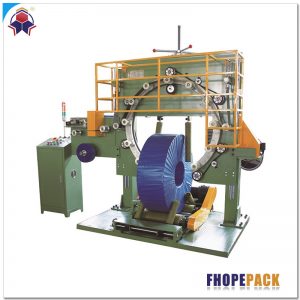
7. Conclusion: Enhancing Value and Reliability through Advanced Packaging
In conclusion, the copper and alloy steel coil packing machine, equipped with dual paper and plastic film capabilities, represents a significant advancement in industrial packaging technology. It directly addresses the critical need for protecting valuable metal strips from environmental degradation and physical damage. By offering flexibility in material selection (including vital VCI options), accommodating various coil dimensions, and providing consistent, efficient, automated wrapping, this machine helps manufacturers:
- Reduce material waste and rejection rates.
- Ensure product quality upon arrival at the customer.
- Increase packaging throughput and operational efficiency.
- Improve workplace safety.
Investing in such advanced packaging solutions is not merely an operational cost but a strategic decision to preserve product value, enhance customer satisfaction, and maintain competitiveness in demanding markets.
Explore further details on copper coil packing solutions: https://www.fhopepack.com/Copper-coil-packing-machine/

